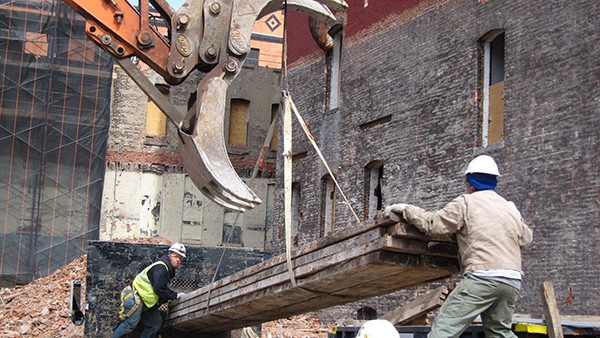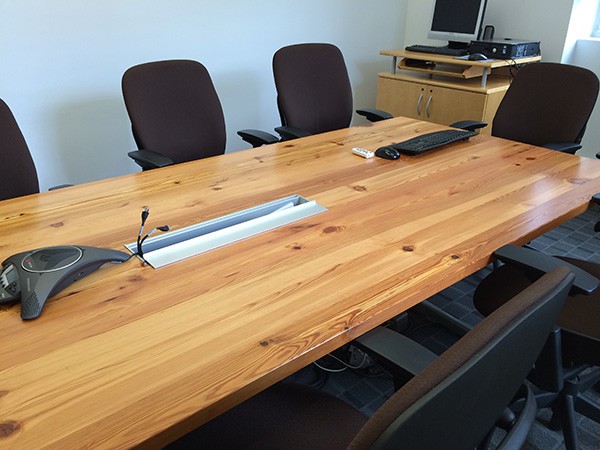New Uses for Demolished Buildings—Recycled Materials in Manhattanville

From the onset of development at the Manhattanville site, Columbia University has prioritized sustainability as a fundamental goal for the overall construction program. This commitment to the environment has led to several best practices in construction. One notable best practice has been the high percentage of recycled and reused materials from demolished buildings.
Through Columbia’s leadership and persistence, contractors were required to disassemble a site piece by piece to preserve building materials, furniture, electronic equipment and more—a different approach to demolition than many were used to.
That requirement opened the eyes of contractors to the opportunities available to recycle various building materials, and it changed the approach they would take for future demolition projects similar to the process at Manhattanville.
“We thought it extremely important that from the very first phase of the Manhattanville project, sustainability was an essential element,” said Philip Pitruzzello, vice president for Manhattanville development. “Every piece of material that can be reused or recycled is a piece that doesn’t have to be manufactured. That reduces pressure on landfills and cuts the carbon footprint of the project.”
Through the demolition of more than 40 buildings to date, the project has a recycling rate of over 90 percent for construction debris. And in some instances, recycled materials are making their way back to Manhattanville and Columbia in new forms.
Long leaf pine wood was a common building material used by New York City builders as a structural element for commercial and industrial buildings in the 19th and early 20th centuries, in recognition of its fire resistant properties and natural resistance to decay.
Nine of the demolished buildings at Manhattanville to date were built with long leaf pine as their structural framing. Through those buildings, approximately 40,000 board feet (1 board foot equals to 1” thick x12” square) of long leaf pine have been salvaged, and a portion of that wood has returned to the new Manhattanville and Morningside campuses at Columbia.
Four conference room tables and four desks have been made by using the salvaged wood. Five pieces of that furniture are in use at the Manhattanville project office, and the other three are at Columbia’s Morningside campus. Future plans at Manhattanville call for long leaf pine for outdoor benches in the Small Square open space between the Lenfest Center and Jerome L. Greene Science Center Buildings, and flooring in event areas in the new Columbia Business School.

After demolition, various structural elements made from long leaf pine were preserved and put into storage with the Sawkill Lumber Company.
“Through this approach to demolition, we’ve created a model to maximize recycling to be replicated elsewhere,” said Pitruzzello.
The benefits of the demolition recycling program extend beyond helping the environment and providing materials to those in need. Columbia partnered with job training organizations including the School of Cooperative Technical Education, a city program that provides job training to at-risk young men and women in Upper Manhattan, and Nontraditional Employment for Women, a nonprofit that trains women for jobs in the construction trades, to train local minority women and men for jobs in salvage, reuse and surplus management, growing fields in an era of green building.
Building materials recycling is one part of Columbia’s clean construction program at Manhattanville. That program, and the development’s overall commitment to sustainability, have led to Manhattanville’s mixed-use development being recognized as LEED-ND Platinum from the U.S. Green Building Council’s pilot rating system for neighborhood development—the first development to receive that recognition in New York City and the first Platinum certification for a university campus plan nationally.
This article originally appeared on the Columbia Manhattanville website.